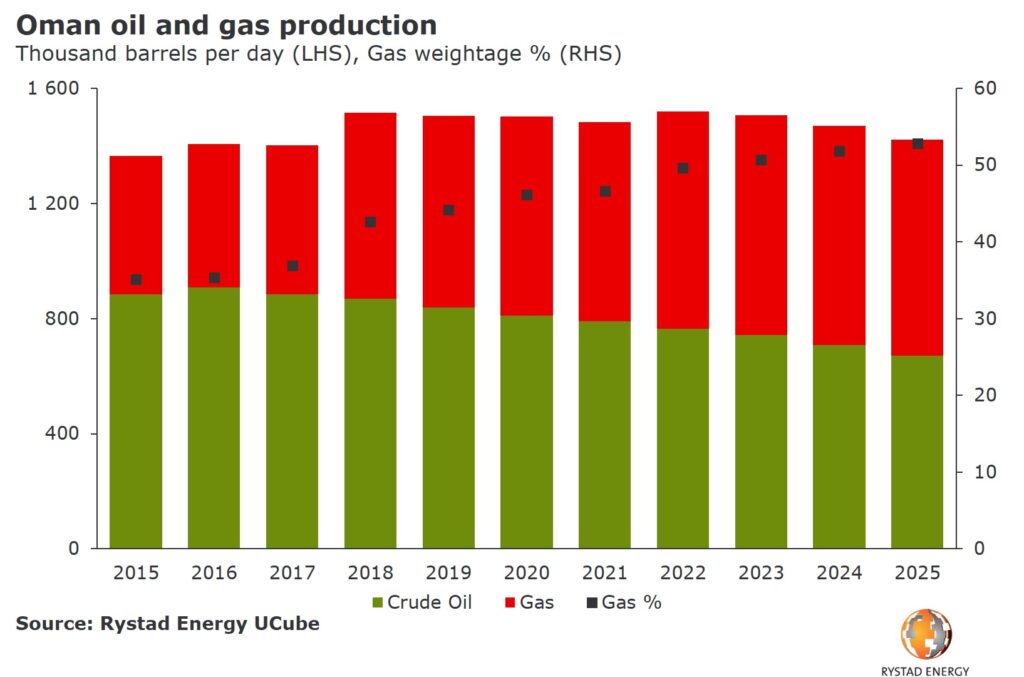Rystad Energy expects Oman’s gas production levels to exceed oil by 2023, due to an impressive increase in the development of gas fields in the sultanate. Namely, Oman’s oil-gas production mix will shift from around 35% gas in 2015 to more than 50% in 2025.
With new oilfield developments failing to stabilize the country’s crude output, Oman has now focused on investing in gas developments. This would drive gas production to escalate to about 130 million cubic meters per day (MMcmd) by 2025. This will in turn shift Oman’s oil-gas production mix from about 35% gas in 2015 to over 50% in 2025.
Rystad Energy analyst Aditya Saraswat, stated:
Gas is on the rise in Oman, and this transition is very timely. Oil output declines over the last two years may indicate a point of no return for Omani oil, but the country’s sliding oil production is set to be replaced by gas
At peak production in 2016, Oman’s oil output reached 900,000 barrels per day, reducing to 870,000 bpd by 2018. Rystad Energy also estimates that by 2025 oil production will decrease by 200,000 bpd more, as output from older fields continues to fall.
[smlsubform prepend=”GET THE SAFETY4SEA IN YOUR INBOX!” showname=false emailtxt=”” emailholder=”Enter your email address” showsubmit=true submittxt=”Submit” jsthanks=false thankyou=”Thank you for subscribing to our mailing list”]
This constitutes a significant turnaround from the near-stagnant 80 MMcmd of gas output from 2008 through 2016, Mr. Saraswat explained.
He also added that amidst rising global LNG demand and the increasingly attractive domestic gas market, international actors are preferring gas developments in Oman. The improved gas market will help gas production levels to surpass Oman’s declining oil production, with gas output projected to surpass oil by 2023.





























































